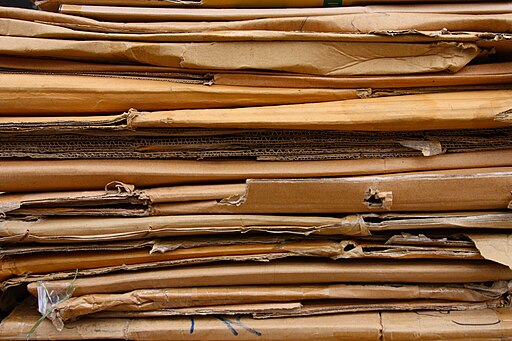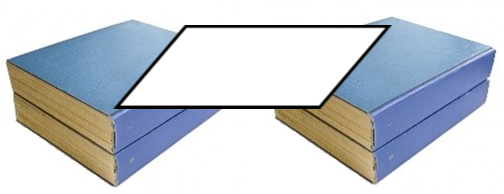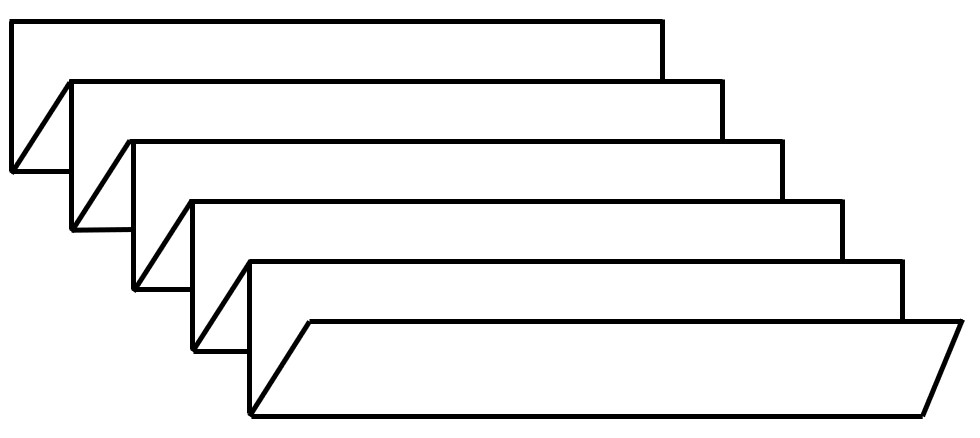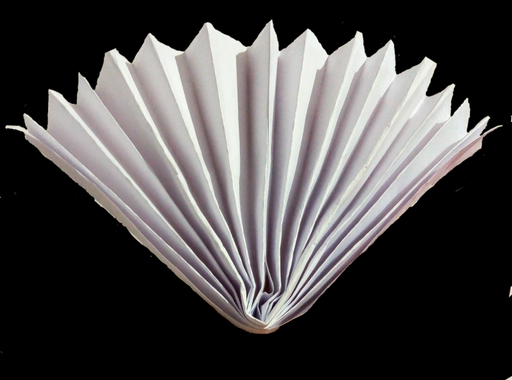Take, shape and create
View Sequence overviewStudents will:
- identify factors that make a test ‘fair’.
- make predictions about how much weight a piece of paper will hold based on its shape.
- analyse results, and make changes to ensuing investigations based on these results.
- determine ways paper can be changed so it will hold more weight.
Students will represent their understanding as they:
- use oral, written and visual language to record and analyse investigation results.
- record data in a table.
- discuss findings to reach consensus about how to change paper to increase the amount of weight it can hold.
In this lesson, assessment is formative.
Feedback might focus on:
- how students change the shape of the paper to potentially hold more weight.
- Are they able to make the link between the shape of the corrugated cardboard and how they might change the shape of the paper, or did they require prompting?
- how students adhere to fair-testing principles.
- Did they maintain fair-testing principles (as closely as feasible for a classroom environment), thus demonstrating an understanding of their importance?
Whole class
Class science journal (digital or hard-copy)
Samples of different types of paper for students to examine (drawing paper, tissue paper, crepe paper, paper towel, etc.), including an A4 sheet of paper
Samples of cardboard for students to examine, including an A4 or similar piece of corrugated cardboard
A number of small objects to act as weights, such as paper clips, pencils, MAB cubes etc.
Demonstration copy of Powerful paper Resource sheet
2 stacks of items, for example books, that are the same height
Each group
A4 paper
2 stacks of items, for example books, tissue boxes or MAB flats, that are the same height. Each team does not need to have the same items, as long as the items in each stack are the same and the stacks are the same height within the group.
A number of small objects to act as weights, such as paper clips, pencils, MAB cubes etc.
Scissors
Each student
Individual science journal (digital or hard-copy)
Powerful paper Resource sheet
Lesson
The Inquire phase allows students to cycle progressively and with increasing complexity through the key science ideas related to the core concepts. Each Inquire cycle is divided into three teaching and learning routines that allow students to systematically build their knowledge and skills in science and incorporate this into their current understanding of the world.
When designing a teaching sequence, it is important to consider the knowledge and skills that students will need in the final Act phase. Consider what the students already know and identify the steps that need to be taken to reach the level required. How could you facilitate students’ understanding at each step? What investigations could be designed to build the skills at each step?
Read more about using the LIA FrameworkRe-orient
If you did the Paper loop activity in Lesson 1, discuss how the paper was changed to create the paper loop (by cutting) and what about the paper was changed (its shape and size).
If this activity was not completed, refer to other instances in the sequence where students have examined and potentially changed paper.
The Inquire phase allows students to cycle progressively and with increasing complexity through the key science ideas related to the core concepts. Each Inquire cycle is divided into three teaching and learning routines that allow students to systematically build their knowledge and skills in science and incorporate this into their current understanding of the world.
When designing a teaching sequence, it is important to consider the knowledge and skills that students will need in the final Act phase. Consider what the students already know and identify the steps that need to be taken to reach the level required. How could you facilitate students’ understanding at each step? What investigations could be designed to build the skills at each step?
Read more about using the LIA FrameworkIdentifying and constructing questions is the creative driver of the inquiry process. It allows students to explore what they know and how they know it. During the Inquire phase of the LIA Framework, the Question routine allows for past activities to be reviewed and to set the scene for the investigation that students will undertake. The use of effective questioning techniques can influence students’ view and interpretation of upcoming content, open them to exploration and link to their current interests and science capital.
When designing a teaching sequence, it is important to spend some time considering the mindset of students at the start of each Inquire phase. What do you want students to be thinking about, what do they already know and what is the best way for them to approach the task? What might tap into their curiosity?
Read more about using the LIA FrameworkExamining paper
Refer to any questions about paper asked by students and recorded at the end of the Launch phase.
Provide students with different types of paper and cardboard to examine and discuss with a partner.
Prompts to focus the discussion include:
- What is each type of paper used for?
- How would you describe each type of paper?
- Its thickness, strength, shape etc.
- What do you notice about the structure/shape of the cardboard? What does its inside layer look like?
- Don't introduce the term corrugated at this time. It will be introduced later in the lesson. You might simply refer to the sample as a piece of a cardboard box.
- How can each sample be physically changed?
Record ideas, and any further questions students have about paper and cardboard, in the class science journal.
Pose the question: Can changing the shape of paper affect how much weight it can hold?
Paper and cardboard
Paper and cardboard are made of the same materials and share many things in common.

Paper and cardboard are made of the same materials and share many things in common.
The thickness/heaviness of paper is measured in grams per square meter (GSM). The thinner the paper, the lower the GSM, and the thicker the paper the higher the GSM. Newspapers are often made of paper between 35-55 GSM, whereas 350 GSM is the typical standard for greeting cards.
It is common for paper with a high GSM to be referred to as cardboard. Cardboard might also be made of thin outer layers of paper, with a layer of thicker corrugated cardboard in the middle. These corrugations are known as flutes, and cardboard of this style is measured by the width of the flutes. There may be multiple outers layers, and multiple fluted layers.
Creating cardboard is itself a physical change to the material of paper, as it involves bending and layering multiple pieces of paper.
Paper and cardboard are made of the same materials and share many things in common.
The thickness/heaviness of paper is measured in grams per square meter (GSM). The thinner the paper, the lower the GSM, and the thicker the paper the higher the GSM. Newspapers are often made of paper between 35-55 GSM, whereas 350 GSM is the typical standard for greeting cards.
It is common for paper with a high GSM to be referred to as cardboard. Cardboard might also be made of thin outer layers of paper, with a layer of thicker corrugated cardboard in the middle. These corrugations are known as flutes, and cardboard of this style is measured by the width of the flutes. There may be multiple outers layers, and multiple fluted layers.
Creating cardboard is itself a physical change to the material of paper, as it involves bending and layering multiple pieces of paper.
The Inquire phase allows students to cycle progressively and with increasing complexity through the key science ideas related to the core concepts. Each Inquire cycle is divided into three teaching and learning routines that allow students to systematically build their knowledge and skills in science and incorporate this into their current understanding of the world.
When designing a teaching sequence, it is important to consider the knowledge and skills that students will need in the final Act phase. Consider what the students already know and identify the steps that need to be taken to reach the level required. How could you facilitate students’ understanding at each step? What investigations could be designed to build the skills at each step?
Read more about using the LIA FrameworkThe Investigate routine provides students with an opportunity to explore the key ideas of science, to plan and conduct an investigation, and to gather and record data. The investigations are designed to systematically develop content knowledge and skills through increasingly complex processes of structured inquiry, guided inquiry and open inquiry approaches. Students are encouraged to process data to identify trends and patterns and link them to the real-world context of the teaching sequence.
When designing a teaching sequence, consider the diagnostic assessment (Launch phase) that identified the alternative conceptions that students held. Are there activities that challenge these ideas and provide openings for discussion? What content knowledge and skills do students need to be able to complete the final (Act phase) task? How could you systematically build these through the investigation routines? Are there opportunities to build students’ understanding and skills in the science inquiry processes through the successive investigations?
Read more about using the LIA FrameworkTesting paper strength
Suspend an A4 sheet of paper between two stacks of the same height, for example books.

Discuss with students: Will the paper hold any weight? If so, how much? Why do you think that?
Test out students’ ideas by adding weights from the classroom (e.g. a pencil, paper clips, MAB cubes) onto the unsupported section of paper between the books, until the paper can no longer support the weight. You might repeat this as many times as required using lighter/heavier objects.
- What if we test with cardboard? Would we have a different result?
- Can I add a different item every time I add weight? Why or why not?
- Would this test be fair if I did that?
- How will I know how many of an item it will hold if I keep changing the item?
Ask students: How could we change the shape of the paper to see if it would hold more weight? Record students' ideas on the demonstration copy of the Powerful paper Resource sheet.
Discuss fair testing principles, noting that for a test to be fair, one thing is measured, one thing is changed, and everything else stays the same.
Optional: To highlight why these principles are important, repeat the demonstration adding weight to the suspended piece of paper, but change multiple variables. For example, each time weight is added add another layer of paper, or move the side supports closer together, or add a different amount of weight (in the form of a different item). Discuss how, because two things were changed each time, it’s impossible to know which of them had an impact on the amount of weight the paper could hold.
In this investigation students will:
- change the shape of the paper.
- measure how much weight it will hold, by counting the number of items the paper holds. Ensure one item is added at a time, and that all items are the same, for example adding pencils, paperclips, or MAB cubes one at a time.
- leave everything else the same.
Brainstorm with students what must stay the same, e.g. the distance between the side supports, the height of the desk, the items being added.
Revise the testing procedure as required: students suspend their paper between two stacks of the same height and add weight one item at a time, until the paper can no longer support the weight. They change the shape of the paper in some way and repeat, to determine if this shape of paper can hold more, or less, weight.
Allow students time to brainstorm, test, and record the results of their ideas in collaborative teams. Students use the Powerful paper Resource sheet (or create your own) to record results.
Note: Folding the paper into an accordion shape mimics the inner, corrugated layer of a cardboard box. This shape will support the most weight. If students need a prompt to consider this shape remind them of the piece of cardboard box they examined at the beginning of the lesson, and the shape of the inside layer.

Strengthening paper
An accordion shape is the easiest way to make a single sheet of paper strong enough to hold weight.

An accordion shape, similar to the corrugations/fluting in a cardboard box, is the easiest way to make a single sheet of paper strong enough to hold weight.
Students might test the paper by first folding it in half, then quarters etc.
Prompt them to think about the orientation they are folding in.
An accordion shape, similar to the corrugations/fluting in a cardboard box, is the easiest way to make a single sheet of paper strong enough to hold weight.
Students might test the paper by first folding it in half, then quarters etc.
Prompt them to think about the orientation they are folding in.
The Inquire phase allows students to cycle progressively and with increasing complexity through the key science ideas related to the core concepts. Each Inquire cycle is divided into three teaching and learning routines that allow students to systematically build their knowledge and skills in science and incorporate this into their current understanding of the world.
When designing a teaching sequence, it is important to consider the knowledge and skills that students will need in the final Act phase. Consider what the students already know and identify the steps that need to be taken to reach the level required. How could you facilitate students’ understanding at each step? What investigations could be designed to build the skills at each step?
Read more about using the LIA FrameworkFollowing an investigation, the Integrate routine provides time and space for data to be evaluated and insights to be synthesized. It reveals new insights, consolidates and refines representations, generalises context and broadens students’ perspectives. It allows student thinking to become visible and opens formative feedback opportunities. It may also lead to further questions being asked, allowing the Inquire phase to start again.
When designing a teaching sequence, consider the diagnostic assessment that was undertaken during the Launch phase. Consider if alternative conceptions could be used as a jumping off point to discussions. How could students represent their learning in a way that would support formative feedback opportunities? Could small summative assessment occur at different stages in the teaching sequence?
Read more about using the LIA FrameworkWhich shape is strongest?
Share the results of the investigation with the class. Select or emphasise comments that focus on how changing the shape of the material (but not what it is made of) can affect how it can be used.
- What changes to the shape of the paper did you make?
- Why did you try these different shapes?
- Did one idea lead you to trying something else? Can you explain why?
- What shape did you find held the most weight?
- Why do you think that shape worked best?
- What words would you use to describe the paper at the beginning? As it changed?
- Flexible, thin, thicker, thick, strong, stronger etc.
- Did the flexibility of the paper change when you made the paper stronger?
- How could you change the shape of materials in your sculpture to make them stronger?
Introduce the term corrugated (having parallel rows of folds that look like a series of waves when seen from the side) as the technical term to describe the shape that held the most weight.
Optional: You might decide to investigate if different sized corrugations might support more weight, or if layering pieces of corrugated paper might do the same.
Reflect on the lesson
You might:
- add to the class word wall of vocabulary related to paper and how it can be changed.
- review the questions students asked about materials and add any new questions students have.
- re-examine the intended learning goals for the lesson and consider how they were achieved.
- discuss how common the use of paper and cardboard packaging is, and how people have been able to change paper in many ways to suit their needs.